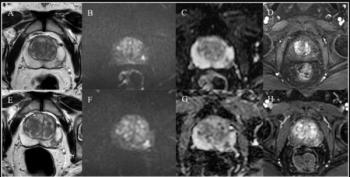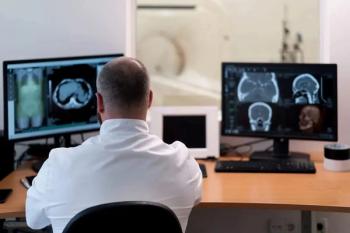
PACS reveals its dark side: radiologist isolation
Imagers will need to leave the reading room and get closer to clinicians to maintain collegial ties.Our facility-wide PACS has been in operation for a year and a half, and the results have been amazing and gratifying.Staff, residents, and faculty
Imagers will need to leave the reading room and get closer to clinicians to maintain collegial ties.
Our facility-wide PACS has been in operation for a year and a half, and the results have been amazing and gratifying.
Staff, residents, and faculty readily adjusted to a filmless environment. Our referring physicians were quick to see its advantages. No longer was a piece of film treated as the currency of imaging information, to be contested and sometimes sequestered because it served three simultaneous and often conflicting functions: pictorial information with immediate diagnostic value, archival material, and billing record.
PACS makes images available simultaneously to referring physicians and interpreting radiologists. We no longer suffer from the chronic problem of lost films. All studies are immediately available, enhancing our revenue. Rooms previously devoted to film storage can be converted to more meaningful uses, enlarging the effective space of the department without changing its overall dimensions.
As our PACS matures, more previous studies become retrievable, making interpretation of current images more accurate and precise. And PACS has made the education process more robust in many respects, from one-to-one teaching at the viewbox to daily conferences with referrers and even didactic instruction between attendings and trainees from other specialties.
The tendency to blame the diagnostic imaging department for the loss of films that are, in fact, kept in hiding in offices in the surgery, medicine, or orthopedics departments has been replaced by a sense of awe about the virtues of technology. PACS has made possible a move from dependence on silver emulsion film to a "silver age" of enhanced capability.
NOT ALL BRIGHTNESS
But we know that another characteristic of silver is its propensity to tarnish unless carefully tended to and polished. In this respect, PACS represents a lurking danger: that we will gradually lose contact with our referring clinicians.
We pride ourselves on serving as consultants to other doctors. Radiology continues to grow in importance for the diagnosis of an expanding range of conditions. As the proprietors of high-technology devices and the interpreters of the images they produce, we are central to the determination of disease and the delineation of its qualities.
Yet PACS encourages a tendency to display our competence only through the written report. Certainly, this fulfills the second definition of the verb "consult" as cited in Webster's New Universal Unabridged Dictionary: to refer to for information.1 But Webster's also provides another definition of consult: to seek guidance from or ask after advice. If we are to meet the latter definition, we must continue to hold face-to-face discussions with colleagues-demonstrating expertise, responding to their questions, and tutoring them about the most appropriate examination in a given situation.
In many institutions, the implementation of PACS brings a marked reduction in "curbside" consultation. Dr. Bruce Reiner and colleagues at the VA Maryland Health Care System in Baltimore reported an 82% decline in ad hoc, active person-to-person consultation after PACS came online.2 Seemingly offhand impromptu interactions are not casual encounters. They are crucial to our need to be an integral member of the healthcare team.
Some radiologists have chosen our specialty because they like the intellectual challenge of diagnosis but prefer to be remote from close involvement with patients or their physicians. For them, PACS offers a refuge. But for the specialty itself, it poses a problem.
FUNCTIONARY OR COLLEAGUE?
All of us depend on the technical expertise of others. We appreciate the efforts of piano tuners, diagnosticians at automobile service centers, and repairers of our MR and CT scanners when those machines go down. But we do not involve ourselves with such technicians aside from asking their help in meeting our needs. In fact, we really do not think about them as individuals. They are functionaries, not colleagues.
A true collegial relationship is bound up in trust, which follows the establishment of credibility and, in the professional sense, the maintenance of intimacy. Intimacy in our clinical dealings requires face-to-face conversation.
If we choose to rely on completed reports as our only means of communication, our referrers will eventually cease to regard us as colleagues and allies. They will consider us as mere suppliers of opinion and analysis, provided along a one-way information path. Without professional intimacy, trust cannot be sustained. Consequently, our specific issues and initiatives may not be shared, heeded, or even acknowledged by fellow physicians.
What can we do to restore dialogue in the presence of PACS? First, we must rethink how we deploy radiologists in hospitals and outpatient facilities when the PACS environment frees them from traditional physical constraints.
The conventional x-ray department in which radiologists congregate to observe images and render reports should soon be as obsolete as the film library. The centripetal tendency of radiologists must be replaced by a dispersal model, moving us near referring physicians. Viewing and interpretation stations must be situated not only in one central area but also near the clinical action and in proximity to our colleagues.
In a busy emergency facility, for example, the radiologist should reside in a diagnostic imaging suite within the ER, so that he or she is available to discuss findings in person with trauma surgeons and emergency medicine physicians. In a smaller hospital, it would be helpful to place a viewing console with a radiologist near the doctor's lounge and/or dining room, making more likely in-person conversations around the workstation.
In an outpatient clinic, the radiologist should be close to evaluation and treatment areas so that clinicians can come by often. In academic facilities, a radiologist should be assigned to daily ICU conferences.
Similarly, a daily conference run by a specific radiologist should take place in medicine, in surgery, and in pediatrics at the locations where these specialists and their trainees work. One or two radiologists should be dedicated to each of these areas to foster a long-term relationship, providing a foundation for trust. These sessions offer an opportunity to sustain camaraderie, which puts a human face on accountability.
Remember, with the implementation of PACS, these physicians no longer need to come to the radiology department. We should therefore relocate close to their work territory.
Redeployments like this may be unlike the way we have worked or wish to, even with PACS. But they should not be considered a form of ostracism. Rather, they are steps we need to take if we wish to maintain our role as caregivers and clinical team members. They will assure our survival in the exciting but still largely unchartered world of PACS.
Dr. Baker is chair of radiology at New Jersey Medical School.
References
1. Webster's New Universal Unabridged Dictionary. New York: Barnes and Noble Books, 1996:438.
2. Reiner B, Siegel E, Protopapas Z, et al. Impact of filmless radiology on frequency of clinical consultation with radiologists. AJR 1999;173:1169-1172.
Newsletter
Stay at the forefront of radiology with the Diagnostic Imaging newsletter, delivering the latest news, clinical insights, and imaging advancements for today’s radiologists.






























